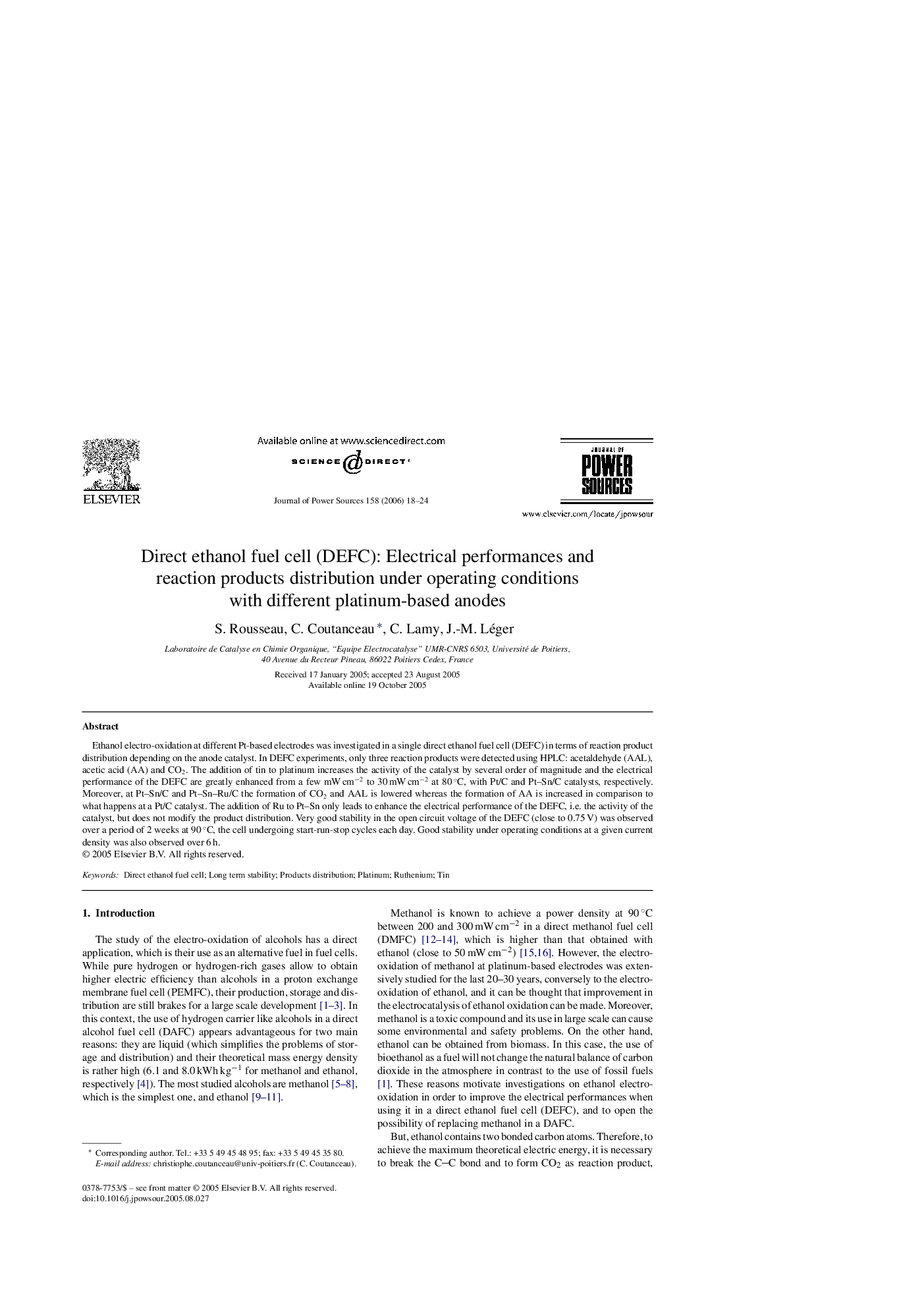| Article ID | Journal | Published Year | Pages | File Type |
|---|---|---|---|---|
| 1287539 | Journal of Power Sources | 2006 | 7 Pages |
Ethanol electro-oxidation at different Pt-based electrodes was investigated in a single direct ethanol fuel cell (DEFC) in terms of reaction product distribution depending on the anode catalyst. In DEFC experiments, only three reaction products were detected using HPLC: acetaldehyde (AAL), acetic acid (AA) and CO2. The addition of tin to platinum increases the activity of the catalyst by several order of magnitude and the electrical performance of the DEFC are greatly enhanced from a few mW cm−2 to 30 mW cm−2 at 80 °C, with Pt/C and Pt–Sn/C catalysts, respectively. Moreover, at Pt–Sn/C and Pt–Sn–Ru/C the formation of CO2 and AAL is lowered whereas the formation of AA is increased in comparison to what happens at a Pt/C catalyst. The addition of Ru to Pt–Sn only leads to enhance the electrical performance of the DEFC, i.e. the activity of the catalyst, but does not modify the product distribution. Very good stability in the open circuit voltage of the DEFC (close to 0.75 V) was observed over a period of 2 weeks at 90 °C, the cell undergoing start-run-stop cycles each day. Good stability under operating conditions at a given current density was also observed over 6 h.
